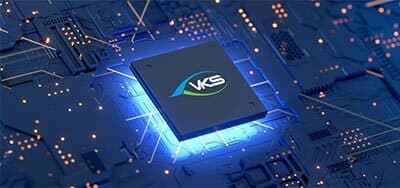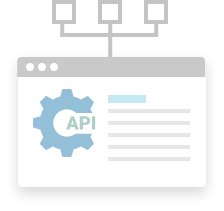What is M2M?
M2M is a key communicative technology that has shaped modern society for decades. It began with telemetry – telephone lines and radio waves allowed humans to communicate over great distances instantaneously. This transformative power of M2M cannot be understated, as it has revolutionized industrial production and human coordination ever since.
Machine-to-machine communication can be through wired or wireless connections, and is configured into networks that recognize each device and connect them to each other.
The Difference Between M2M & IoT
Hold on a minute… machine-to-machine sounds a lot like the Internet of Things!
You’re very right – both IoT and M2M describe networks of connected devices that communicate with each other to manage and control systems.
As these communication technologies progressed, different terms were used to describe how they worked within different contexts. That’s why you’ll often hear “IoT” used when referring to the network of devices as a singular whole, and “M2M” used when describing individual machines within such a connected network. This may differ depending on the use case.
Generally, IoT systems are networks with mostly wireless connections between devices like sensors, scanners, and readers. M2M networks are broader, featuring wireless devices as well as devices that are wired or that use programmable logic controllers (PLC).
How M2M Works
Machine-to-machine typically deals with 3 types of connections:
- Serial ports
- Programmable logic controllers (PLC)
- Wireless connections like bluetooth, wifi, etc.
Because M2M can be wired or wireless, it has a larger overarching network than a server room or a cloud computing network alone. An M2M connected system can include multiple devices, each in communication with each other depending on the best use case scenario for that device or its most helpful application.
M2M technology is used extensively within the modern Smart Factory for operations optimization. The main purpose of M2M is increasing communication between technical devices while at the same time reducing the required time and bandwidth for such operations.
While M2M can be utilized for complicated processes, it is also instrumental in simple efficiency improvements such as turning machines off and on automatically. This can save power and make factories more efficient by deprioritizing underutilized resources.
Preventive maintenance is also a beneficial application of M2M. By streamlining communication between two or more devices, workers can receive signals that better predict regular maintenance schedules and that also send alerts when unexpected errors occur.
Remote monitoring is another example of an M2M application. With remote monitoring, managers can have an accurate view of current operations without needing to physically inspect areas themselves. This makes a safer work environment as well as a more informed one.
Examples of M2M In the Modern World
Machine-to-machine technologies exist in many areas of daily modern life, not just industrial factories.
Examples of Commonplace M2M
You’ve definitely come into contact with M2M capability in your daily life, from using a cellphone to checking your Smart meter when paying your electric or gas bill.
Vending machines use M2M by sending a signal to producers when inventory is low for a particular item. The owner can then request a restock of the vending machine without even having to physically go and check the inventory levels themselves.
GPS, or global positioning systems, is a frequently used M2M technology. Whenever you are accessing your GPS system while driving, the digital map communicates with your car’s software to indicate your current location and your expected destination.
Examples of Industrial M2M
Industrial M2M is also known by another name: the Industrial Internet of Things, or IIoT. Within an IIoT, devices and sensors help to remotely monitor machinery conditions and production rates in real-time.
Enterprise Resource Planning systems, or ERPs, are software platforms that deal with the administration and management of factory machinery and other automatic devices. ERPs have capabilities like collecting data from linked devices, processing inputs and outputs, monitoring inventory, logging worker IDs, and much more.
Another example of an Industrial M2M is SCADA, which stands for Supervisory Control and Data Acquisition. SCADA is a control system architecture at a high, supervisory level that is composed of networks, software, and hardware within an industrial ecosystem.
Basically, it centralizes all aspects of the production process that occur simultaneously so that executive control can be administered via one overarching system.








